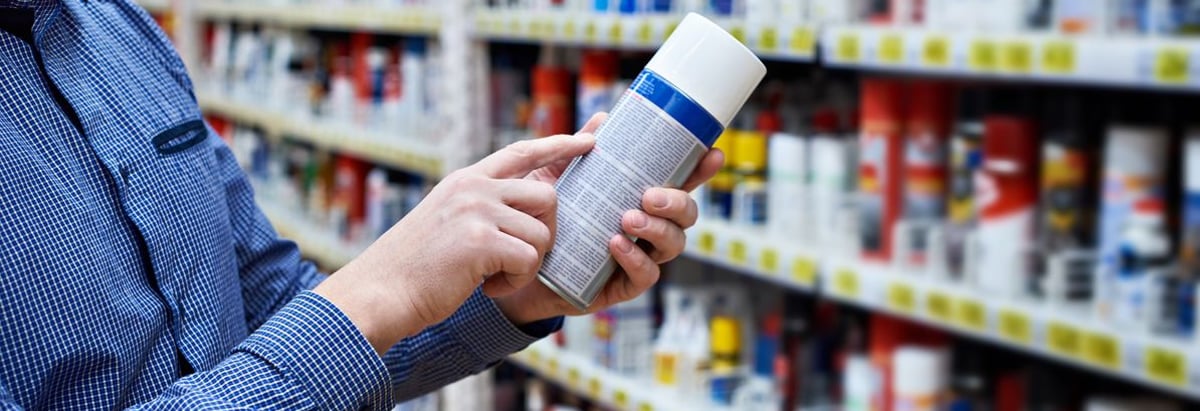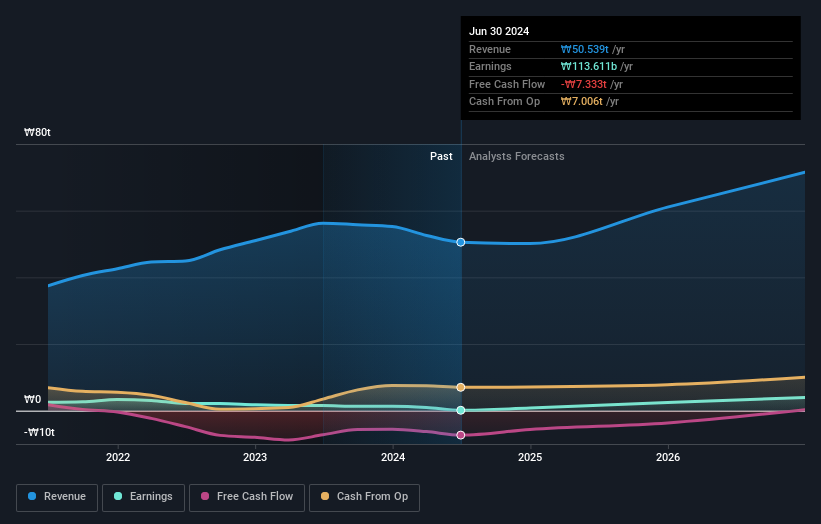- South Korea
- /
- Chemicals
- /
- KOSE:A051910
LG Chem, Ltd.'s (KRX:051910) stock price dropped 3.1% last week; individual investors would not be happy

Key Insights
- The considerable ownership by individual investors in LG Chem indicates that they collectively have a greater say in management and business strategy
- The top 13 shareholders own 50% of the company
- Institutional ownership in LG Chem is 29%
To get a sense of who is truly in control of LG Chem, Ltd. (KRX:051910), it is important to understand the ownership structure of the business. We can see that individual investors own the lion's share in the company with 40% ownership. Put another way, the group faces the maximum upside potential (or downside risk).
As a result, individual investors as a group endured the highest losses last week after market cap fell by ₩783b.
In the chart below, we zoom in on the different ownership groups of LG Chem.
See our latest analysis for LG Chem

What Does The Institutional Ownership Tell Us About LG Chem?
Many institutions measure their performance against an index that approximates the local market. So they usually pay more attention to companies that are included in major indices.
As you can see, institutional investors have a fair amount of stake in LG Chem. This can indicate that the company has a certain degree of credibility in the investment community. However, it is best to be wary of relying on the supposed validation that comes with institutional investors. They too, get it wrong sometimes. It is not uncommon to see a big share price drop if two large institutional investors try to sell out of a stock at the same time. So it is worth checking the past earnings trajectory of LG Chem, (below). Of course, keep in mind that there are other factors to consider, too.

LG Chem is not owned by hedge funds. LG Corp. is currently the company's largest shareholder with 30% of shares outstanding. In comparison, the second and third largest shareholders hold about 6.8% and 3.1% of the stock.
A closer look at our ownership figures suggests that the top 13 shareholders have a combined ownership of 50% implying that no single shareholder has a majority.
Researching institutional ownership is a good way to gauge and filter a stock's expected performance. The same can be achieved by studying analyst sentiments. There are plenty of analysts covering the stock, so it might be worth seeing what they are forecasting, too.
Insider Ownership Of LG Chem
The definition of company insiders can be subjective and does vary between jurisdictions. Our data reflects individual insiders, capturing board members at the very least. Company management run the business, but the CEO will answer to the board, even if he or she is a member of it.
Insider ownership is positive when it signals leadership are thinking like the true owners of the company. However, high insider ownership can also give immense power to a small group within the company. This can be negative in some circumstances.
Our data suggests that insiders own under 1% of LG Chem, Ltd. in their own names. It is a very large company, so it would be surprising to see insiders own a large proportion of the company. Though their holding amounts to less than 1%, we can see that board members collectively own ₩241m worth of shares (at current prices). Arguably recent buying and selling is just as important to consider. You can click here to see if insiders have been buying or selling.
General Public Ownership
The general public, who are usually individual investors, hold a 40% stake in LG Chem. While this size of ownership may not be enough to sway a policy decision in their favour, they can still make a collective impact on company policies.
Public Company Ownership
Public companies currently own 30% of LG Chem stock. We can't be certain but it is quite possible this is a strategic stake. The businesses may be similar, or work together.
Next Steps:
It's always worth thinking about the different groups who own shares in a company. But to understand LG Chem better, we need to consider many other factors. Consider risks, for instance. Every company has them, and we've spotted 2 warning signs for LG Chem you should know about.
If you are like me, you may want to think about whether this company will grow or shrink. Luckily, you can check this free report showing analyst forecasts for its future.
NB: Figures in this article are calculated using data from the last twelve months, which refer to the 12-month period ending on the last date of the month the financial statement is dated. This may not be consistent with full year annual report figures.
New: AI Stock Screener & Alerts
Our new AI Stock Screener scans the market every day to uncover opportunities.
• Dividend Powerhouses (3%+ Yield)
• Undervalued Small Caps with Insider Buying
• High growth Tech and AI Companies
Or build your own from over 50 metrics.
Have feedback on this article? Concerned about the content? Get in touch with us directly. Alternatively, email editorial-team (at) simplywallst.com.
This article by Simply Wall St is general in nature. We provide commentary based on historical data and analyst forecasts only using an unbiased methodology and our articles are not intended to be financial advice. It does not constitute a recommendation to buy or sell any stock, and does not take account of your objectives, or your financial situation. We aim to bring you long-term focused analysis driven by fundamental data. Note that our analysis may not factor in the latest price-sensitive company announcements or qualitative material. Simply Wall St has no position in any stocks mentioned.
About KOSE:A051910
LG Chem
Engages in the petrochemicals, energy, advanced materials, and life science businesses in Korea, China, Asia/Oceania, the United States, Europe, and internationally.
Very undervalued with reasonable growth potential.

